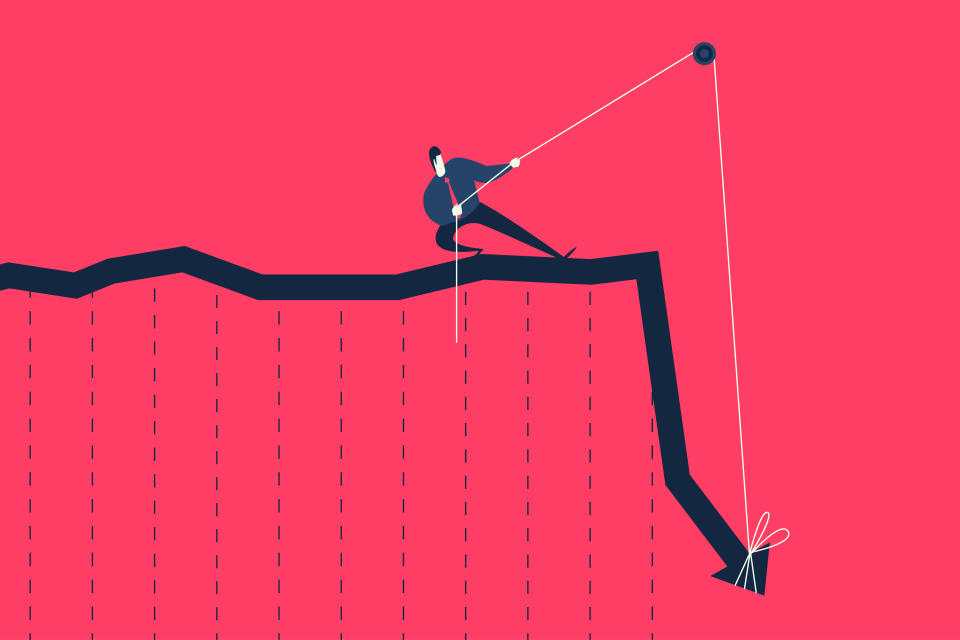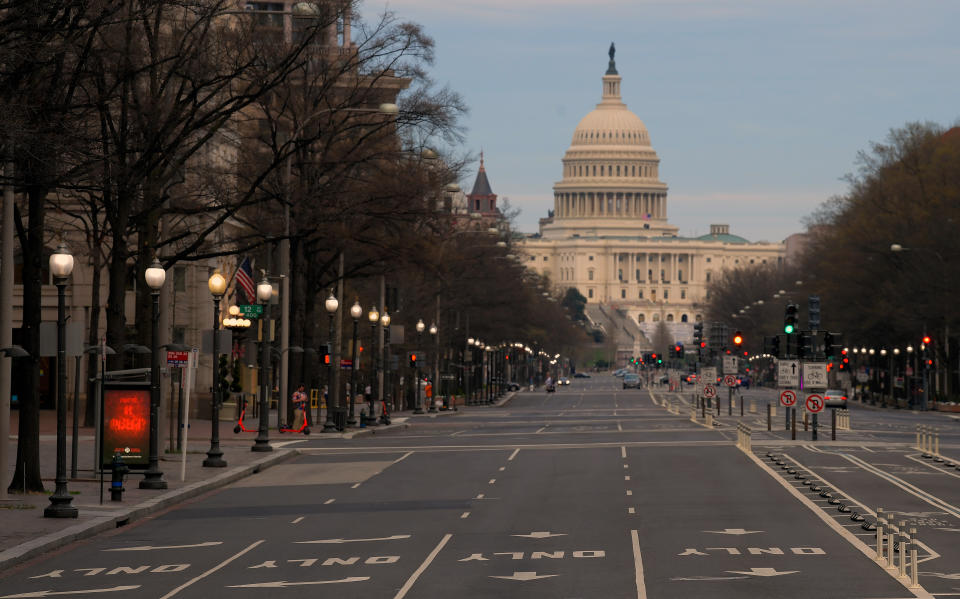When do markets bottom during a crisis?: Morning Brief
Monday, March 23, 2020
Get the Morning Brief sent directly to your inbox every Monday to Friday by 6:30 a.m. ET. Subscribe
First, we must limit the ‘deep tail risks’
The stock market, in theory, is a discounting mechanism. In other words, it prices in what’s expected to happen more than what already has. So when prices fall, it’s largely because investors expect the future to be worse than what they had previously assumed.
And while there’s no question that the world is set to face severe economic pain, it’s certainly possible that much of the bad news is priced into the market. Furthermore, if developments show that the outlook is less dire than what’s currently expected, then we could see the market inflect and embark on a new bull market.
Sure, a crisis like what we face now is certainly different than run-of-the-mill tough times. But what could turn things around would be a form of incrementally better news.
Read more: How to think about stock investing
In a research note published on Sunday, Goldman Sachs’ Kamakshya Trivedi and Zach Pandl argue that markets in a crisis bottom when you can contain “the deep tail risks.” In other words, markets often stop going down when investors can rule out the most nightmarish scenarios.
“The core insight is that while conditions are deteriorating rapidly, markets find it hard to be confident in the limits of the damage and so put heavy weight on deep negative tail risks,” the analysts wrote. “Inflection points are often, in the first instance, about the market being able to put limits on those tail risks even before true recovery is visible.”
A tail risk is a risk that has a low probability of being realized. And in the current conversation, deep tail risks are the unthinkable scenarios that are almost impossible to define.

Trivedi and Pandl identified six conditions under which those deep tail risks are reduced: “A stabilization or flattening out of the infection rate curve in the US and Europe”; “Visibility on the depth and duration of disruptions on the economy”; “Sufficiently large global stimulus”; “A mitigation of funding and liquidity stresses”; “Deep undervaluation across major assets and position reduction”; and “No intensification of other tail risks.”
For now, with the way things have been deteriorating, those deep tail risks have yet to be ruled out.
Consider the past week, during which we’ve only heard of worsening forecasts for the economy. Last Monday, we were talking about U.S. GDP plunging at a 10% rate. On Wednesday, we were talking about a 14% rate of decline. By Friday, we were talking about a 24% rate. And on Sunday, the numbers deteriorated to 30% and even 50%.
All that sets the stage for a new week of trading, which is already off to a bad start.
That said, you have to wonder how much worse it can get.
“[Y]ou know you are getting closer to a bottom when Wall Street economists are tripping over themselves to see who can have the lowest forecast for Q2. There is ZERO reputational risk for penciling in a big drop,” Renaissance Macro’s Neil Dutta said on LinkedIn.
“I’m pretty sure that we will see the biggest quarterly drop in my lifetime and the biggest quarterly annualized increase in the same calendar year,” he said.
By Sam Ro, managing editor. Follow him at @SamRo
What to watch today
Economy
8:30 a.m. ET: Chicago Fed National Activity Index, February (-0.29 expected, -0.25 in January)
Top News

European stocks sink as US fails to agree on coronavirus stimulus package [Yahoo Finance UK]
Brokers sound off as coronavirus forces NYSE to go all electronic today [Yahoo Finance]
Starbucks sweetens worker pay in select locations as coronavirus crisis escalates [Yahoo Finance]
Airline CEOs promise to eliminate dividends and stock buybacks if Congress passes $29B coronavirus bailout [Yahoo Finance]
SoftBank unveils dramatic $41 billion asset sale plan [Bloomberg]
YAHOO FINANCE HIGHLIGHTS
'Unrecognizable': Experts warn of historic collapse in economic activity
Dr. Oz says it's the 'patriotic duty' of Americans to go without masks
—
Follow Yahoo Finance on Twitter, Facebook, Instagram, Flipboard, SmartNews, LinkedIn, YouTube, and reddit.
Find live stock market quotes and the latest business and finance news
For tutorials and information on investing and trading stocks, check out Cashay

 Yahoo Finance
Yahoo Finance 